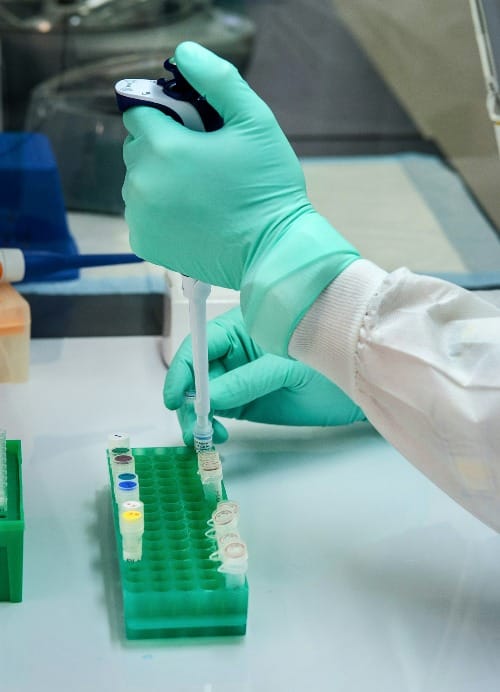While elevated insulin levels can make weight loss more challenging, the relationship between insulin and weight management is complex. Research suggests that insulin resistance, often associated with higher insulin levels, can contribute to difficulty losing weight and may lead to a cycle of weight gain and increased insulin production.
The Insulin-Weight Gain Connection
The relationship between insulin and weight gain is complex and multifaceted. Insulin, a hormone crucial for regulating blood glucose levels, can contribute to weight gain through several mechanisms:
1. Glucose absorption and storage: Insulin stimulates cells to absorb glucose from the bloodstream, which is then either used for energy or converted into fat for long-term storage[3]. When insulin levels are consistently high, this can lead to increased fat storage and weight gain.
2. Increased appetite: Insulin can affect appetite regulation. Low blood sugar levels, which can occur in response to high insulin, may trigger hunger and increase food intake[2]. This phenomenon is sometimes referred to as "defensive snacking" among people with diabetes[2].
3. Insulin therapy side effects: For individuals with diabetes using insulin therapy, weight gain is a common side effect. Studies have shown that patients can gain between 3 to 9 kg in the first year of initiating insulin therapy, primarily due to increased adipose tissue[2].
4. Insulin resistance: In cases of insulin resistance, cells become less responsive to insulin, leading to higher insulin production. This can create a cycle where more insulin is needed to manage blood glucose, potentially contributing to weight gain[1][3].
5. Metabolic changes: Insulin influences various metabolic processes. In people with type 2 diabetes and high insulin resistance, exogenous insulin can worsen hyperinsulinemia, leading to preferential conversion of glucose to fat through increased de novo lipogenesis[2].
6. Regaining lost weight: Some weight gain in diabetic patients starting insulin therapy may be attributed to regaining weight previously lost due to uncontrolled diabetes[2].
The type of insulin used can also impact weight gain. Some studies suggest that basal insulin analogs may carry less risk of weight gain compared to conventional human insulin preparations[2]. For instance, insulin detemir has been associated with less weight gain than insulin glargine[2].
It's important to note that while insulin can contribute to weight gain, it remains a crucial treatment for managing diabetes. Healthcare providers can employ strategies to mitigate insulin-associated weight gain, such as combining insulin with other medications (e.g., metformin), adjusting insulin regimens, and providing guidance on diet and exercise[2][4].
Understanding the insulin-weight gain connection is essential for both patients and healthcare providers in developing effective diabetes management strategies that balance glycemic control with weight management goals.
Carbohydrates and Blood Sugar Spikes

Carbohydrates have the most significant impact on blood sugar levels compared to other macronutrients. When consumed, carbohydrates are broken down into glucose, which enters the bloodstream and causes blood sugar to rise[1][2]. However, not all carbohydrates affect blood sugar equally.
The glycemic index (GI) is a scale that ranks carbohydrate-containing foods based on how quickly and how much they raise blood sugar levels[5]. Foods with a high GI (70 or above) are rapidly digested and cause substantial fluctuations in blood sugar, while those with a low GI (55 or below) are digested more slowly, prompting a more gradual rise[5].
Simple carbohydrates, such as those found in sugary foods and beverages, tend to cause rapid spikes in blood sugar[1][3]. These include added sugars like those in cakes, cookies, and soft drinks[2]. In contrast, complex carbohydrates, especially those high in fiber, generally lead to a slower and more gradual increase in blood sugar levels[1][2].
Fiber plays a crucial role in moderating blood sugar spikes. It helps slow down sugar absorption, resulting in a less pronounced peak when blood sugar rises[2]. Good sources of fiber include whole fruits, vegetables, nuts, seeds, and whole grains[2].
For people with diabetes, managing carbohydrate intake is essential for blood sugar control. Counting carbs and being aware of portion sizes can help in matching insulin doses to the amount of carbohydrates consumed[2]. It's recommended to choose healthy carbs from whole grains, vegetables, and fresh fruits, while limiting highly processed foods and those with added sugars[2][3].
The glycemic load (GL) is another useful measure that takes into account both the GI of a food and the portion size[3]. This provides a more accurate picture of how a particular serving of food will affect blood sugar levels[3].
It's important to note that other factors can influence how carbohydrates affect blood sugar. These include the presence of protein and fat in a meal, which can slow down carbohydrate digestion and absorption[3]. Additionally, individual factors such as insulin sensitivity, stress levels, and physical activity can also impact blood sugar responses to carbohydrates[4].
For optimal blood sugar management, experts recommend balancing meals with a mix of carbohydrates, proteins, and healthy fats[3]. This approach can help moderate blood sugar spikes and provide more stable energy levels throughout the day.
Insulin Resistance: The Hidden Obstacle
Insulin resistance is a widespread metabolic condition that acts as a hidden obstacle to health, potentially leading to various chronic diseases if left unaddressed. This condition occurs when cells in the muscles, liver, and fat tissue become less responsive to insulin, a hormone crucial for regulating blood sugar levels[2][3].
As insulin resistance develops, the body compensates by producing more insulin to maintain normal blood glucose levels. This increased insulin production can continue for years or even decades, resulting in a progressive insulin resistance syndrome (IRS)[5]. Over time, this constant overproduction of insulin can exhaust the pancreatic beta cells, leading to a decline in insulin production and potentially the development of type 2 diabetes mellitus (T2DM)[5].
However, the impact of insulin resistance extends far beyond diabetes. Dr. Gerald Reaven's research has shown that insulin resistance is a precursor to a wide range of chronic medical conditions, including acne, Alzheimer's disease, dementia, hypertension, peripheral vascular disease, polycystic ovarian syndrome, coronary heart disease, and possibly even cancer[5]. This makes insulin resistance a key driver of what are often referred to as "diseases of lifestyle" but might more accurately be termed "diseases of the modern industrial diet"[5].
Symptoms of insulin resistance can be subtle and may include fatigue, increased hunger, and difficulty losing weight[3]. These symptoms often go unnoticed, allowing the condition to progress silently for years before more serious health issues arise.
Diagnosing insulin resistance typically involves various tests, including fasting blood glucose, hemoglobin A1c, and oral glucose tolerance tests[3]. These assessments help determine the extent of insulin resistance and whether a patient has progressed to prediabetes or T2DM.
Treatment for insulin resistance primarily focuses on lifestyle modifications. Weight loss, regular exercise, and a healthy diet are cornerstone interventions that can significantly improve insulin sensitivity[3]. In some cases, medications may be prescribed to help manage insulin resistance and its associated conditions.
It's important to note that while T2DM is a significant concern, it represents only a fraction of the health issues stemming from insulin resistance. Many individuals with insulin resistance may never develop diabetes but are still at risk for other chronic diseases[5]. This underscores the importance of early detection and management of insulin resistance, even in the absence of overt diabetes.
Understanding insulin resistance as a hidden obstacle to health is crucial for both healthcare providers and individuals. By recognizing its role in various chronic diseases, we can take proactive steps to address this underlying metabolic issue and potentially prevent a wide range of health complications.














Member discussion